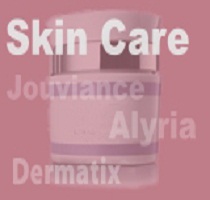The Bioceramic Orbital Implant
(InSIGHT Newsletter Special Edition/ Update)
On February 13, 2001, Health and Welfare Canada approved the Bioceramic Orbital Implant for general use in Canada.
On April 22, 2000 this implant was approved by the U.S. Food and Drug Administration.
It has also been available in several other parts of the world since 1999.
The Bioceramic orbital implant is manufactured by:
FCI, 20 Boulevard Gallieni – BP111, 92134 Issy-Les-Moulineaux, Cedex, France Tel.: (0) 1 40 93 06 09, Fax: (0) 1 40 93 46 87 In Canada the implant is distributed by: Oculo-Plastik, Inc., 200 Sauvé West, Montreal, Québec H3L 1Y9, Tel.: 1-514-381-3292, Toll Free: 1-888-381-3292, Fax: 1-514-381-1164, Toll Free Fax: 1-800-879-1849 In United States the implant is destributed by: FCI Ophthalmics, P.O. Box 465 – 76 Prospect Street, Marshfield Hills, MA 02051, 1-800-932-4202 or 1-781-837-4416, Fax: 1-781-837-8292, e-mail:info@fci-ophthalmics.com
INTRODUCTION
In 1985 coralline hydroxyapatite was introduced as an orbital implant for use following enucleation, evisceration or secondary orbital implant surgery and a new era in anophthalmic socket rehabilitation began. This implant became popular as it was well tolerated by the orbital tissues (biocompatible) and very porous, allowing fibrovascular ingrowth. Potential advantages included a decreased infection rate, decreased migration rate and improved motility of the artificial eye.1-3
In 1993, research on a synthetic version of the hydroxyapatite implant (FCI, Cedex, France) was initiated. Following three successive generations of this implant (studied in a rabbit model) and experience in over 120 human patients, the synthetic hydroxyapatite implant has proven to be another very useful anophthalmic orbital implant. It is now used throughout many countries worldwide. Its advantages over the original coralline hydroxyapatite (Bio-Eye®) include: easier drilling, and less expensive.4,5
A NEW GENERATION OF IMPLANTS
In 1996 the author began animal research on a new generation of porous implants made of Aluminum oxide (Al2O3). The implant, referred to as “The Bioceramic Implant” or alumina,6 is a man-made ceramic biomaterial that has been used for more than 30 years in orthopedics (hip implants) and dentistry (dental implants) with great success. High purity aluminum oxide (Al2O3) is considered the prototype of a truly bioinert material.7 It does not dissolve in body fluids and does not release soluble components.7 There is strong evidence that it is coated with protein molecules immediately after insertion into the body.7
As a result, it escapes recognition as a foreign body and is immunologically camouflaged. Human fibroblasts and osteoblasts seem to prefer aluminum oxide over hydroxyapatite to grow on.8,9 Aluminum oxide has been shown to be more biocompatible than HA in cell culture studies.8 Aluminum oxide has also been suggested as the standard reference material when biocompatibility studies are required to investigate new products in the same field.8 It has a greater bio-inertness than all other implant materials available for joint replacement.8
The development of a porous aluminum oxide sphere by FCI (Cedex, France) allowed the investigation of this product as an orbital implant. Animal research revealed this product to be easy to work with and implant. It was well tolerated and did not cause any excessive tissue inflammation. The implant showed extensive vascularization that was similar to the synthetic hydroxyapatite and corralline hydroxyapatite (Bio-Eye®) which it was compared with.
Human implantation was initiated under Health and Welfare Canada and Hospital Research Ethics Board approval in January 1999 by the author and to date more than 65 patients have been implanted following enucleation, evisceration or secondary implantation surgery. The patients have been followed for up to 23 months (average 11 months) with excellent results. The implant is not only easy to work with and implant but extremely well tolerated by the socket tissue. A Vicryl™ mesh wrap or other wrap (sclera, fascia) is recommended for easy insertion. Complications so far have been surprisingly few in number. Of the 65 patients, 4 had occasional discharge (which occurs with any implant). There have been no exposures, no conjunctival thinning, no pyogenic granulomas, no pain or discomfort and no case of infection (Table I). This extremely low incidence of complications (to date) is much better than other porous orbital implants currently being used (hydroxyapatite, porous polyethylene).5,10,11,12
Serum aluminum levels were checked at the time of initial surgery and at various times post surgery ranging from 1 week to 24 months. The serum aluminum levels have been within a normal range in all samples to date.
Pegging of the implant is straightforward and can be done with a hand held drill bit technique under local anaesthetic. Five of 65 patients have been drilled to date, with excellent motility developing afterwards. Minor problems developing after the pegging have included 2 patients with occasional discharge, 1 with a click, one with a pyogenic granuloma and 1 with conjunctiva that grew over the peg hole. There were no unusual problems associated with pegging the Bioceramic implant (Table II).12 None of these minor problems affected prosthesis wearing and each were readily managed at the office.
In summary, the Bioceramic orbital implant represents a new generation of porous orbital implant. It is easy to manufacture, structurally strong, free of contaminants and easy to work with. It has a very extensive porous architecture allowing fibrovascular ingrowth to readily occur. Being coated with the body’s own protein on implantation, allows it to become immunologically camouflaged. It is extremely well tolerated in the human socket (bioinert) and has become this author’s implant of choice for anophthalmic socket surgery.
Table I
Problems with implant (before peg) in 4 of 65 patients
|
Problem |
# | % |
|
Minor discharge |
4 |
6.2 |
|
Implant exposure |
0 |
0 |
|
Conjunctival thinning |
0 |
0 |
|
Pyogenic granuloma |
0 |
0 |
|
Pain/discharge |
0 |
0 |
|
Infection |
0 |
0 |
Table II
Problems with implant (after peg) in 5 of 15 patients (33%)
|
Problem |
# |
|
Minor discharge |
2 |
|
Conjunctivitis |
1 |
|
Click |
1 |
|
Pyogenic granuloma |
1 |
|
Conjunctival overgrowth of peg |
1 |
References
1. Perry AC. Advances in enucleation. Ophthal Plast Reconstr Surg 1991;4:173-82.
2. Byrd WA. Coralline hydroxyapatite orbital implant. Ophthal Practice 1991;9:262-6.
3. Dutton J. Corralline hydroxyapatite as an ocular implant. Ophthalmology 1991;9:262-6.
4. Jordan DR, Gilberg S, Mawn L, Brownstein S, Grahovac S. The synthetic hydroxyapatite implant: a report of 65 patients. Ophthal Plast Reconstr Surg 1998;14:250-5.
5. Jordan DR. Anophthalmic orbital implants. Ophthalmology Clinics of North America 2000;13:4:587-608.
6. Jordan DR, Mawn L, Brownstein S, McEachren TM, Gilberg SM, Hill V, Grahovac SZ, Adenis JP. The Bioceramic implant: a new generation of porous orbital implants. Ophthal Plast Reconstr Surg 2000;16:5:347-355.
7. Heimke G, Griss P, Jentschura G, Werner E. Bioinert and bioactive ceramics in orthopedic surgery. In Hastings G, Williams A, eds., Mechanical Properties of Biomaterials. Toronto: John Wiley & Sons, 1980, pgs. 207-215.
8. Christel P. Biocompatibility of surgical grade dense polycrystalline alumina. Clin Orthop 1992;282:10-18.
9. Mawn L, Jordan DR, Ahmad I, Gilberg S. Effects of orbital biomaterials on fibroblasts. Can J Ophthalmol 2001, in press.
10. Oestricher JH, Liu E, Berkowitz M. Complications of hydroxyapatite orbital implants: a review of 100 consecutive cases and a comparison of Dexon mesh (polyglycolic acid) with scleral wrapping. Ophthalmol 1997;104:324-329.
11. Remulla HD, Rubin PA, Shore JW. Complications of porous spherical orbital implants. Ophthalmol 1995;102:586-593.
12. Jordan DR, Chan S, Mawn L. Complications associated with pegging hydroxyapatite orbital implants. Ophthalmology 1999;106:505-512.
If you have any questions regarding the topics of this newsletter, or requests for future topics of InSight, please contact Dr. David R. Jordan office by telephone at (613) 563-3800.







